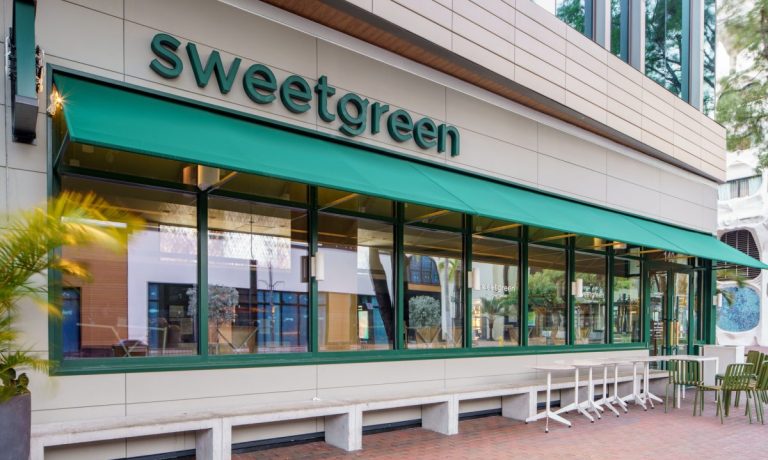
This week in restaurants, Sweetgreen and In-N-Out tap catering, weekday dining declines and Dickey’s streamlines.
On Monday (March 6), fast-casual brand Sweetgreen, which has nearly 200 locations across the United States, launched its catering program, the company said in an email, targeting the in-office corporate meal occasion.
The news comes as the majority of consumers have returned to working on-site at least some of the time by a considerable margin. The Survey of Working Arrangements and Attitudes (SWAA) conducted by Stanford University and University of Chicago economists, finds that 13% of full-time workers are fully remote compared to 59% who are full-time on site, while 28% are in a hybrid arrangement.
Indeed, Sweetgreen has historically fared best when workers were in the office. Last year, the chain shared that it was hit hard by the slow recovery of on-site work, looking to compensate by shifting its mix from city-center locations toward more residential neighborhoods, opening new stores in suburban areas.
Additionally, iconic California quick-service restaurant (QSR) chain In-N-Out, which also has locations in Nevada, Arizona, Utah, Texas, Oregon and Colorado, has been expanding its catering efforts, but unlike Sweetgreen, the brand is targeting not office workers but families. Lynsi Snyder, the chain’s owner and president, recently announced on Instagram the launch of a new catering truck reserved for events for children and youth.
The news comes as restaurants seek ways to bring in larger orders as many consumers rein in their spending. Data from the report “The 2022 Restaurant Digital Divide: Restaurant Customers React To Rising Costs, Declining Service” reveals that a significant share of consumers has been pick cheaper items from restaurant menus. Plus, another handful is decreasing the amount of food per order.
In addition to looking to spend less per order, many consumers are dining out less altogether amid inflation.
Higher-end restaurant company The One Group, parent of STK and Kona Grill, said on its fourth-quarter earnings call Thursday (March 9) that it is seeing these trends affect consumers’ habits early in the week but not on the weekends.
“Probably the only noticeable factor I see today different from maybe six months ago is perhaps the build of the business Monday through Sunday. I do think that the weekends are super robust,” CEO Manny Hilario told analysts. “Mondays through Wednesday, I do think that, if there’s a place where the consumer might be making more decisions about going out or not, it’s on those days of the week.”
Consumers are indeed making changes. Research from PYMNTS’ study “Consumer Inflation Sentiment: Inflation Slowly Ebbs, but Consumer Outlook Remains Gloomy,” which drew from a survey of more than 2,100 consumers, found that 78% have been eating at home more often to save money amid inflation.
In an effort to manage costs in the face of inflation, fast-casual brand Dickey’s Barbecue Pit, which has 550 locations in the U.S. and abroad, has downsized its menu by 42% in an effort to reduce spending and focus on the most profitable items, as QSR reported. The news shows the extent of suppliers’ prices increases impact on even major brands.
“The decision to optimize our menu is a sign of the times. We will always serve the highest quality, pit master prepared Legit Texas barbecue, but we must evolve to stay successful,” CEO Laura Rea Dickey said. “The restaurant industry has battled a challenging economy, food inflation, labor shortages and depressed consumer spending. That requires a creative solution to continue our success as the world’s largest barbecue brand.”